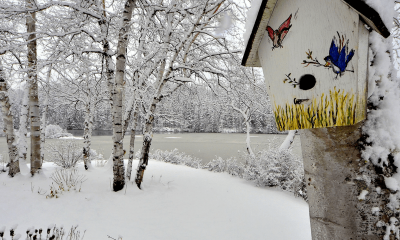Surviving a Winter Storm: What to do Post-Disaster
A winter storm can bring high winds, freezing temperatures, ice, and large amounts of snow. In a matter of hours you could be stranded in your home, business or even in your vehicle. Typically, meteorologists are able to predict winter storms, leaving property owners with time to prepare for the impact. It is only after the storm passes that many are left wondering where to even begin with the clean-up process and how to mitigate resulting damages to their property.
We have compiled a simple checklist with feature points to help you ready yourself for the post-storm process. The main thing to keep in mind is that safety comes first. Be careful, be diligent and be safe.
Things to do following a winter storm:
- Check on neighbors and any elderly community members, offer assistance where you can
- Begin clean-up – shovel or use a snow blower to remove snow & apply ice melt on walkways
- Before shoveling:
- Stretch out muscles and get blood flowing
- Be sure to use your legs to lift and push snow as often as possible
- Shovel paths for exit areas and to exterior buildings
- Remove snow from doorways and driveways in case of an emergency situation such as a fire where your property may have to be evacuated
- Take frequent shoveling breaks and don’t strain
- Straining can lead to a heart attack, which is one of the top causes of death during a winter storm
- Rake your roof to remove snow weight
- Avoid standing on your roof to shovel it, as you can easily slip and fall and suffer serious injury
- To be safe, hire a professional to handle removing large amounts of snow on your roof
- Commercial buildings are especially susceptible to collapse following a major winter storm. Since they typically have flat roofs, snow can pile up weighing too much for the building to hold, thus resulting in collapse
- Before shoveling:
- Report any fallen power lines to your power authority immediately – do not touch live wires
- Check for frozen pipes, immediately turn off water if you see any that have or may burst
- Click here to view tips on how to prevent your pipes from freezing
 Examine the exterior of your property to note any damages to your roof, siding, landscaping, etc. that have been caused by snow and ice.
Examine the exterior of your property to note any damages to your roof, siding, landscaping, etc. that have been caused by snow and ice.- Remove any ice dams that may have formed– this may take a few days, so check frequently
- Click here to view tips on how to mitigate damages from ice dams
- Stay warm and dry when working outside to avoid hypothermia – change clothes frequently and utilize a layering system
- Review your communications plan – identify what worked and what didn’t and make any necessary changes
- Check your disaster supply kit – replace any items you may have used and add anything needed for the next storm
- For advice on what to include in your kit, read up on our blog series “Create Your Disaster Plan in 12-Steps”
Scott Greenwald, Regional VP at GGG-AI discusses the challenges of winter weather claims for home and business owners:
Following a winter storm examine your property for physical signs of damage and remove snow as quickly as possible. Safety is key when handling winter weather and that includes cleaning up after the storm. If your home or business has suffered damage due to a winter storm, we can help in your financial recovery. Contact us today at 800.382.2468.
For more information on winter storms in regards to your property insurance, visit:












